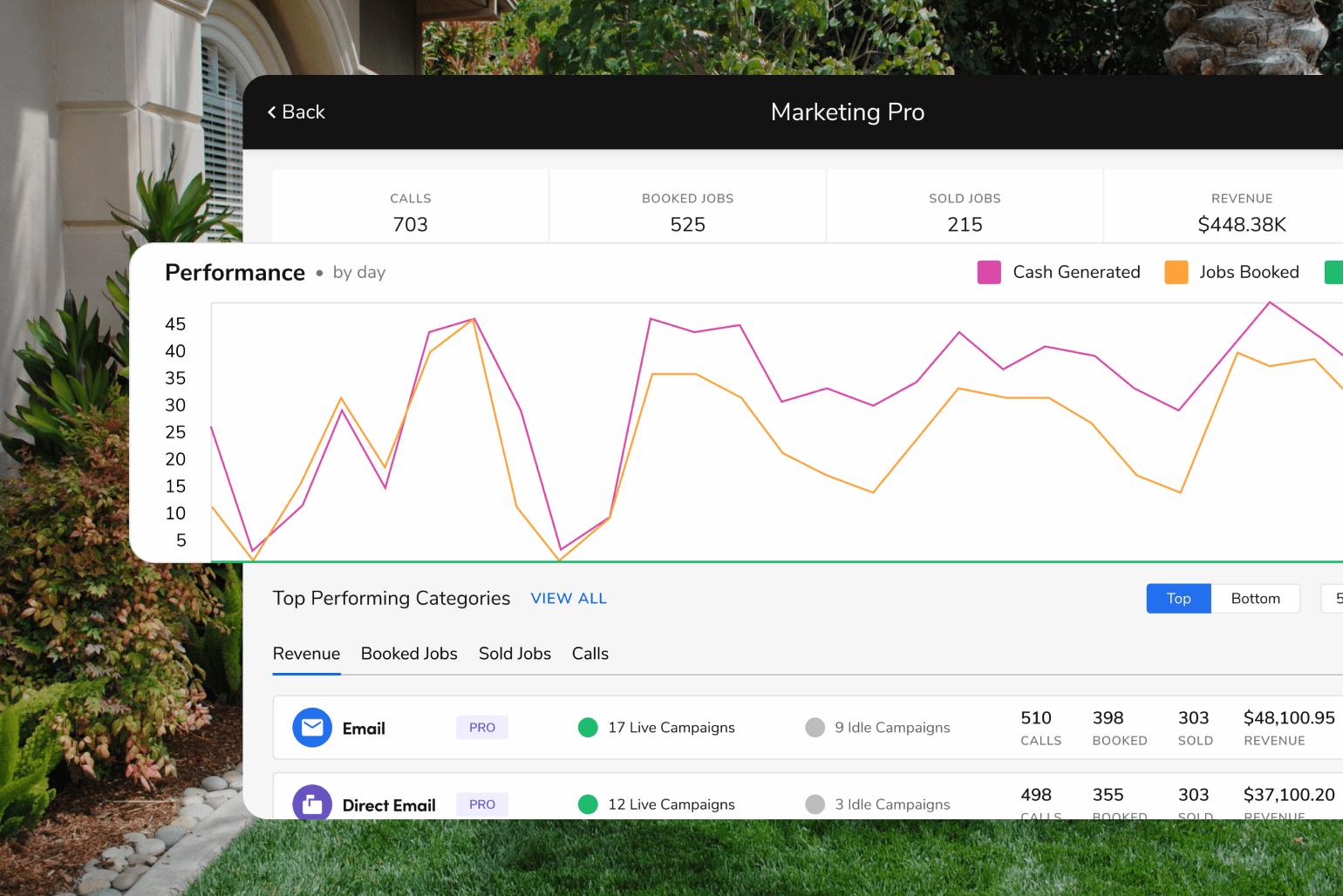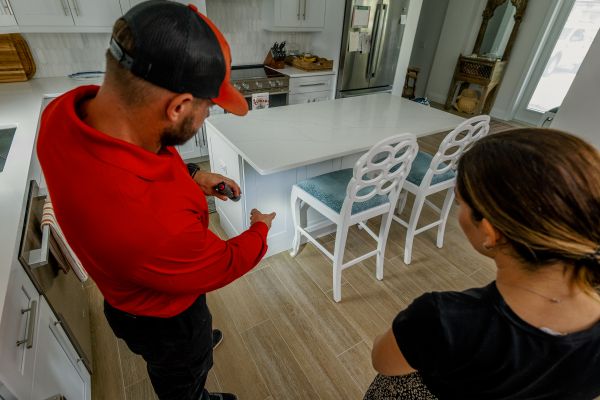Calculating & Maximizing Profit in Your Pest Control Business

Pest Control Business Profit Margin: Formulas and Success Tips
Creating a pricebook for your pest control business demands meticulous attention to detail and accurate calculations. This ensures robust profit margins, representing the money earned on products or services after deducting all direct and indirect costs.
Prices should be in line with industry standards and your competitors, but take into account any seasonality. For example, a pest control company must price accordingly in the busy summer months to maintain positive cash flow throughout the slower seasons.
Need help establishing pest control prices? Read on for practical tips that help business owners succeed financially in the competitive pest control industry.
How to Calculate the Profit Margin for Your Pest Control Business
To calculate profit margins for your pest control business, follow these steps.
1. Identify direct costs per unit
Determine the direct costs associated with providing a particular service, such as bed bug control, termite inspection, or insecticide application. This includes labor wages, materials (pesticides, baits), and equipment (sprayers, protective gear).
To calculate direct costs, tally expenses per service unit, summing up labor, material, and equipment costs for each job. In a pest control business context, a unit of output could be defined as a service rendered per hour, such as an hour of technician labor or fixed costs for a service call. To track and maintain detailed records of all costs incurred per service rendered, enabling accurate cost-per-unit calculations for precise profit margin assessments.
2. Identify sales revenue per unit
Sales revenue per unit refers to the income generated from each service or unit provided by a pest control company. For example, consider a pest control treatment for a standard-sized property costs $200. The sales revenue per unit (pest control treatment) is $200.
3. Determine your gross profit
To determine gross profit, subtract direct costs from sales revenue. Say the direct cost of the pest control application is $75 (2 hours at $30 each and $15 in equipment/materials). Take the sales revenue of the treatment ($200) minus the direct cost of $75 for a total gross profit of $125.
4. Calculate your profit margin
To calculate a gross profit margin, divide gross profit by sales revenue, then multiply by 100 to get a percentage. In the example above, with a sales revenue of $200 and direct costs of $75, the gross profit is $125.
Take 125 (gross profit) divided by 200 (revenue), which equals .625. Then, multiply .625 by 100 for a gross profit margin of 62.5%.
Net profit margin represents the percentage of revenue that remains after subtracting all expenses, including operating costs, taxes, and interest. Suppose the company incurs additional operating expenses of $50, resulting in a net profit of $75.
To calculate the net profit margin, divide net profit (75) by gross profit ($200), then multiply by 100 for a percentage. Example: (75/200) x 100 = 37.5%.
What is a Good Pest Control Business Profit Margin?
Determining what constitutes a good profit margin for a pest control service business involves several factors influenced by market dynamics, operational efficiency, and region. Larger companies achieve higher margins due to economies of scale, while smaller businesses may average slightly lower margins due to limited resources and higher relative operational costs.
According to FinModelsLab, a leading provider of financial tools and resources for startups and small businesses, the average profit margin for pest control companies in the U.S. ranges from 10 to 20 percent.
When businesses are in growth mode, profit margins may be lower as they’re reinvesting money into the business for hiring, acquiring new customers, and marketing. In addition, the pest control market in specific geographies may necessitate thinner margins.
A pest control business owner should use industry benchmarks to decide what profit margin is healthy for their business. Then, measure margins regularly to ensure the company achieves financial goals and course correct if needed.
How to Improve the Profit Margin for Your Pest Control Business
Now that you know how to calculate your profit margin, you may wonder how to increase it. Follow these tips for improving profit margins.
Reduce direct costs
Reducing direct costs proves vital to enhancing profit margins in a pest control business. Effective cost-cutting measures include streamlining inventory management to minimize material waste, negotiating better supplier deals for bulk purchases, and implementing efficient scheduling to optimize technician labor utilization.
In addition, investing in training to enhance technician expertise can minimize errors and rework, reducing operational expenses.
Increase pricing
While no customer likes a price increase, raising prices is necessary to keep up with market conditions and maintain profitability. First, conduct customer surveys or market research to gauge satisfaction and pricing tolerance. It’s also important to assess competitor pricing strategies while emphasizing your services' unique value.
Once you’ve determined an appropriate price increase, communicate this change with existing residential and commercial clients before it occurs. Regularly monitor market shifts to ensure pricing remains competitive while reflecting the value delivered.
Utilize technology to improve efficiency
To improve operational efficiency and trim costs, consider investing in a field service app like FieldRoutes, which is designed to simplify and automate field service operations. From drag-and-drop scheduling to intelligent routing that saves gas and time, FieldRoutes streamlines pest control business operations.
Selecting the right technology involves understanding the unique challenges of the business. CRM systems tailored for service industries enhance interactions with a customer base, contributing to increased satisfaction and retention. Prioritize scalable solutions adaptable to growth and capable of integrating with existing systems, ensuring seamless implementation without disruption.
Increase the number of services offered
Expanding service offerings in a pest control business presents opportunities for growth and diversification of revenue streams. Conduct comprehensive market research and customer surveys to pinpoint additional services in demand within the target market.
Analyze customer feedback, inquire about unmet needs, and assess competitor offerings to identify gaps in the market. Consider complementary services like wildlife control, lawn care, or sanitation, aligning them with pest control to create a comprehensive solution package that matches your business model.
Increase the quality of services offered
In addition to new services, examine your existing offerings to pinpoint improvement opportunities. Consistently delivering high-quality service proves paramount for customer retention, referrals, and business success.
Conduct ongoing staff training to ensure technicians stay updated on the latest techniques and technologies. Implement industry best practices, such as Integrated Pest Management (IPM) methods, to convey your company’s commitment to effective and responsible pest control.
Ask for customer feedback and reviews, and respond to them promptly, remedying any mistakes mentioned in negative reviews. Monitoring reviews may even provide insight into operational changes you can make to better service customers.
Develop a comprehensive marketing plan
To reach potential customers and nurture existing customers, you need a comprehensive marketing plan that includes social media, direct mail, email marketing, and SEO. Measure the efforts across each channel to double down on campaigns with higher ROIs and scale back on ones that don’t perform.
What Are the Risks Associated With Increasing Profit Margins?
While higher profit is essential to business growth, it can come with inherent risks. Increased prices may reduce customer satisfaction if perceived value doesn't align with the cost. Competitive pricing pressures might emerge, risking market share loss if rivals offer similar services at lower rates.
Cost-cutting measures could diminish service quality, impacting customer loyalty and reputation.
Moreover, a push for higher margins might strain employee satisfaction due to increased workload or reduced resources, affecting morale and productivity.
Balancing profit objectives with maintaining service quality and fostering a positive work environment is crucial to mitigate these risks and sustainably drive profitability.
Optimize Your Operations with Pest Control Business Software
Relying solely on margin improvements without addressing underlying operational inefficiencies could lead to short-term gains but long-term sustainability issues for revenue growth.
To streamline operational efficiency for an established or new business, invest in an all-in-one business software solution like FieldRoutes, which provides features for estimating, scheduling, routing, accounting, marketing, and more—efficient operations paired with real-time reporting results in a strong bottom line.
FieldRoutes helps field service companies simplify, scale, and grow. Schedule a free demo to get started.






